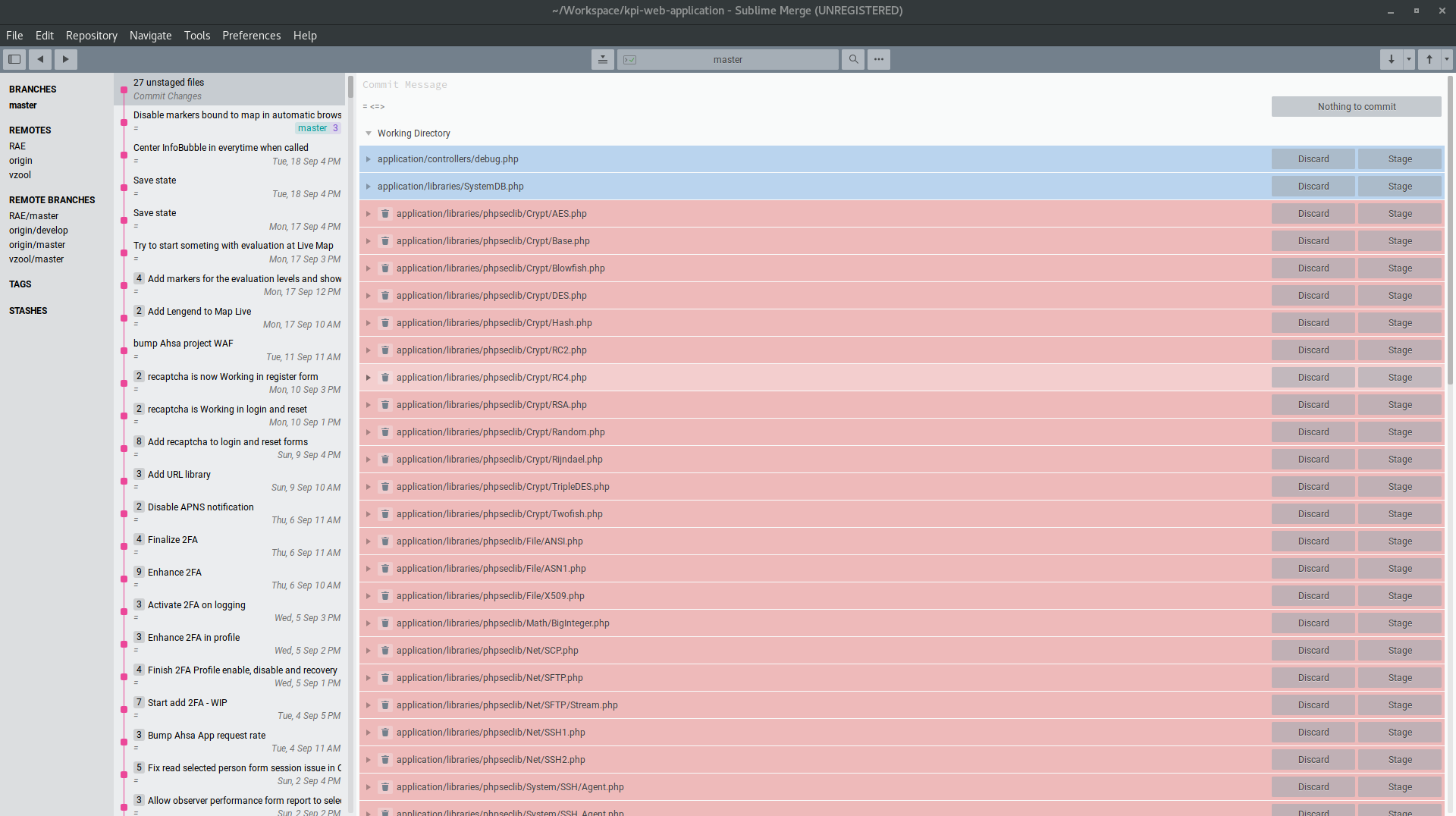

- #SUBLIME MERGE INTERACTIVE REBASE UPDATE#
- #SUBLIME MERGE INTERACTIVE REBASE PATCH#
- #SUBLIME MERGE INTERACTIVE REBASE CODE#
- #SUBLIME MERGE INTERACTIVE REBASE SERIES#

It’s simply the result of ignoring the needs of normal users, and confusing architecture with interface. Interestingly, I don’t think this trade-off is inherent in Git’s design. Git is a 4 handle, dual boiler espresso machine – when all they need is instant. But the majority of Git users are not in this situation: they simply write code, often on a single branch for months at a time. Most of the power of Git is aimed squarely at maintainers of codebases: people who have to merge contributions from a wide number of different sources, or who have to ensure a number of parallel development efforts result in a single, coherent, stable release. Keep using Git, and more concepts will occasionally drop out of the sky: refs, tags, the reflog, fast-forward commits, detached head state (!), remote branches, tracking, namespaces 5. Remember the complicated information model in step 1? It keeps growing, like a cancer.
#SUBLIME MERGE INTERACTIVE REBASE SERIES#
Translation: git-rebase – Sequentially regenerate a series of commits so they can be applied directly to the head node 4. Git-rebase – Forward-port local commits to the updated upstream head Here’s a description for humans: git-push – Upload changes from your local repository into a remote repository
#SUBLIME MERGE INTERACTIVE REBASE UPDATE#
Git-push – Update remote refs along with associated objects They describe the commands from the perspective of a computer scientist, not a user. The man pages are one almighty “fuck you”.
#SUBLIME MERGE INTERACTIVE REBASE PATCH#
It combines email reading with patch applying, and thus uses a different patch syntax (specifically, one with email headers at the top). The most spectacular example of this is the command “git am”, which as far as I can tell, is something Linus hacked up and forced into the main codebase to solve a problem he was having one night.

The various options of “git reset” do completely different things. Specifying filenames completely changes the semantics of some commands (“git commit” ignores local, unstaged changes in foo.txt “git commit foo.txt” doesn’t). But the shortcut for “git branch” combined with “git checkout”? “git checkout -b”. Some “shortcuts” are graced with top level commands: “git pull” is exactly equivalent to “git fetch” followed by “git merge”. The command line syntax is completely arbitrary and inconsistent. Now Git: you have files, a working tree, an index, a local repository, a remote repository, remotes (pointers to remote repositories), commits, treeishes (pointers to commits), branches, a stash… and you need to know all of it. In fact, branches are tags, and files you already know about, so you really need to learn three new things. That’s pretty much everything you need to know. As a point of reference, consider Subversion: you have files, a working directory, a repository, versions, branches, and tags. The information model is complicated – and you need to know all of it. What a pity that it’s so hard to learn, has such an unpleasant command line interface, and treats its users with such utter contempt. It has a powerful distributed model which allows advanced users to do tricky things with branches, and rewriting history.
#SUBLIME MERGE INTERACTIVE REBASE CODE#
They are not configured to use keyboard shortcuts, but you can do it by yourself.Git is the source code version control system that is rapidly becoming the standard for open source projects. Instead saving the changes to another file or having them stored in clipboard, you can create a snapshot which will be stored in memory until the view is closed or you decide to delete it.Īll snapshot-related commands are accessible from view's context menu, tab's context menu and file's context menu.

This is handy when you are working on some feature and, for instance, want to compare performance of a number of possible solutions. Snapshots can be used to temporarily store important changes. Runs custom VCS command in the repository root and allows to compare current view to returned output. Using this command does not require setting up Sublimerge as a merge tool for Git.Ĭompare to Custom Git/Hg/SVN Command Output. If you open a file containing merge conflicts, this command will open three-way diff to resolve them. Using this command does not require setting up Sublimerge as a merge tool for Git. This command will list all the conflicted files and let you open three-wayĭiff to resolve conflicts. When you merge or rebase it may happen you get merge conflicts. The same commands (except the ones defined in Macros) appears in Command Palette.īoth files are opened in read-only mode allowing you only to see the differences. If you have at least one file open in Sublime Text, press ctrl+ alt+ d to view list of available commands for current file.


 0 kommentar(er)
0 kommentar(er)
